Table of Contents
Unlocking the Power of Adobe Marketing Analytics for Data-Driven Success
Data is the backbone of modern marketing, powering strategies that resonate with audiences and deliver measurable results. At the heart of this transformation lies Adobe Marketing Analytics, a key offering within the Adobe Marketing Cloud. Designed to convert raw data into actionable insights, this platform empowers marketers to craft personalized campaigns, optimize performance, and achieve meaningful ROI.
As we explore its capabilities, you’ll see how Adobe Marketing Analytics redefines data-driven marketing, enabling businesses to thrive in a competitive, customer-centric world.
“…this platform empowers marketers to craft personalized campaigns, optimize performance, and achieve meaningful ROI.”
Core Features of Adobe Marketing Analytics
Adobe Marketing Analytics stands out as a comprehensive solution for marketers, offering a suite of powerful features to unlock the full potential of their data:
🔄 Real-time data collection and analysis: Monitor customer interactions and campaign performance instantly to stay ahead of trends.
🎯 Advanced audience segmentation: Target specific customer groups with precision, tailoring campaigns for maximum impact.
🔗 Cross-channel attribution modeling: Evaluate the effectiveness of touchpoints across channels to optimize marketing strategies.
🤖 Predictive analytics with Adobe Sensei AI: Leverage AI-driven insights to forecast trends and enhance decision-making.
📊 Customizable dashboards and reporting tools: Create intuitive, shareable reports tailored to your business goals.
What makes these features even more impactful is their seamless integration with the Adobe marketing suite, including Marketo Engage for advanced lead management and the Adobe Advertising Cloud for paid media optimization. Together, they provide a unified ecosystem that simplifies complex marketing processes, enhances efficiency, and drives measurable outcomes.
Empowering Marketers to Deliver Measurable Results
As expectations for marketing performance skyrocket, Adobe Marketing Analytics offers a robust solution to quantify and enhance your impact. This platform enables marketers to:
- Spot emerging trends and pivot strategies accordingly.
- Scale personalized experiences to meet diverse customer needs.
- Maximize ROI through informed marketing spend optimization.
- Demonstrate tangible business outcomes tied to marketing efforts.
By transforming insights into impactful action, Adobe Marketing Analytics empowers marketers to create campaigns that truly connect, foster growth, and strengthen customer loyalty. Uncover the platform’s advanced capabilities to learn how it redefines data-driven marketing and drives exceptional results.
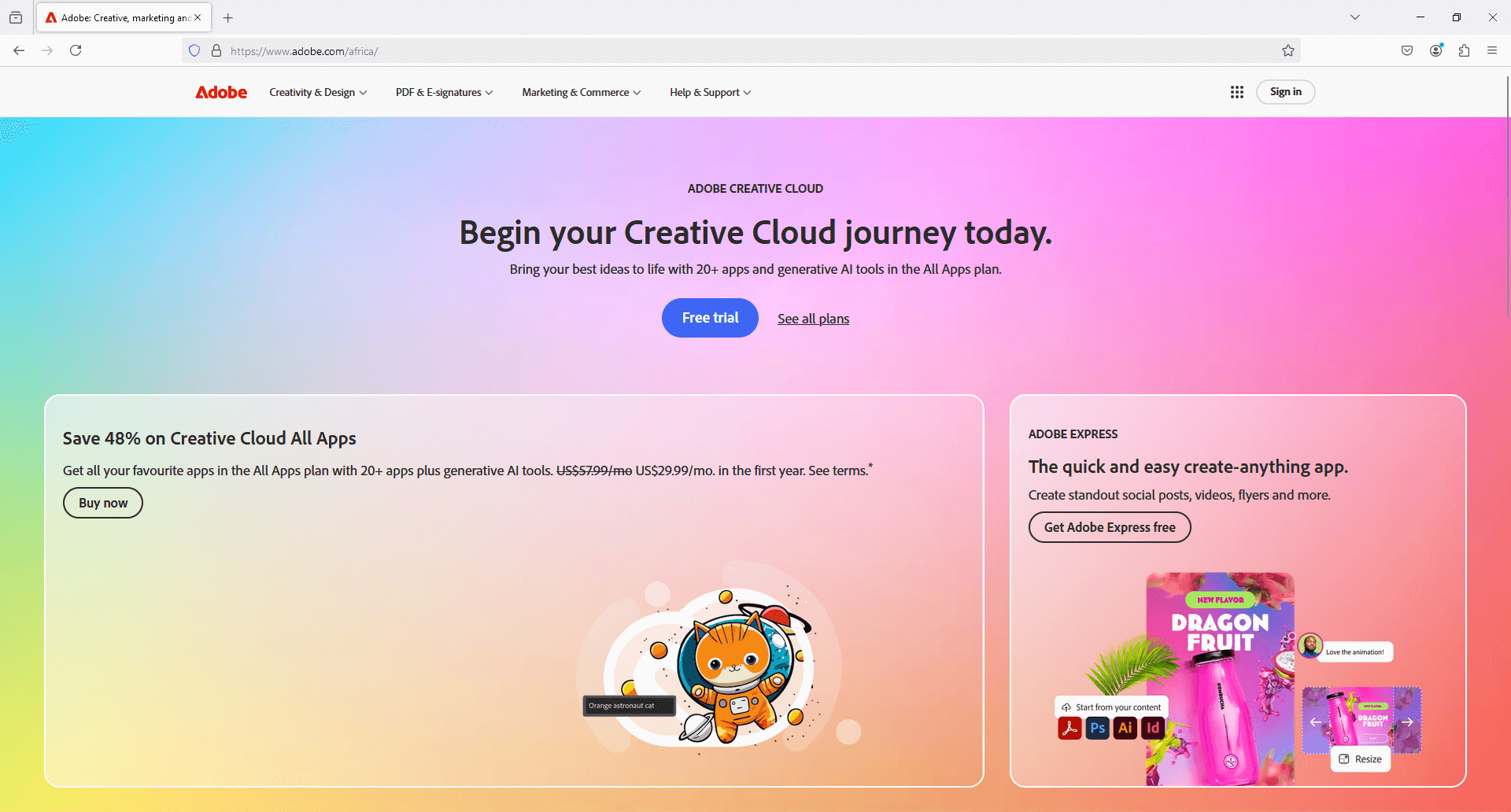
Exploring Adobe Marketing Analytics
Adobe Marketing Analytics is a cornerstone of the Adobe Experience Cloud, delivering powerful tools for marketers to transform complex data into actionable insights. This platform integrates seamlessly with the Adobe marketing suite, creating a unified ecosystem for data-driven decision-making and campaign optimization.
Uniting Capabilities Across the Adobe Marketing Suite
A key strength of Adobe Marketing Analytics is its integration with tools like Adobe Advertising Cloud and Marketo Engage. This synergy empowers marketers to analyze and optimize paid media campaigns for improved ROI, enhance lead nurturing and account-based strategies with enriched B2B insights, and seamlessly transfer data between tools to enable personalization and effective campaign execution.
The Foundation for Scalable Success
Whether you’re optimizing multi-channel campaigns or scaling operations, Adobe Marketing Analytics provides the flexibility and power to meet evolving business needs. By unifying data, offering real-time insights, and integrating with advanced tools, this platform serves as the nerve center of your digital marketing strategy, ensuring sustained success in a competitive marketplace.

Capabilities of Adobe Marketing Analytics
Adobe Marketing Analytics delivers a versatile set of capabilities, empowering marketers to transform data into actionable insights. From data collection to real-time analytics, this platform equips businesses to optimize strategies and drive measurable outcomes.
Comprehensive Data Collection and Processing
This tool excels in gathering data from web, mobile, and offline channels, creating a unified view of customer interactions. By integrating with Marketo Engage, it simplifies the collection of data from marketing automation campaigns, enabling marketers to visualize the full customer journey.
Key capabilities include:
- Cross-device data stitching: Build comprehensive customer profiles by linking interactions across devices.
- Channel categorization: Automatically organize data for easy interpretation.
- Real-time processing: Gain instant access to actionable insights.
Advanced Analysis and Reporting
The platform’s Analysis Workspace provides a flexible environment for exploring data and deriving meaningful insights. It includes tools that cater to sophisticated analytics and reporting needs.
Highlights include:
- Predictive analytics powered by Adobe Sensei AI: Anticipate trends and customer behavior with precision.
- Cohort analysis and segmentation: Identify and target audience groups effectively.
- Attribution modeling: Determine the value of each touchpoint in driving conversions.
- Anomaly detection: Spot unexpected trends or behaviors to act quickly.
Customizable dashboards and the robust Report Builder enable teams to craft tailored, shareable reports that align with organizational goals.
Real-Time Analytics
In today’s fast-paced marketing environment, the ability to respond to real-time data is essential. Adobe Marketing Analytics offers features that enable marketers to adapt campaigns dynamically:
- Live data streams: See customer interactions as they happen.
- Real-time audience segmentation: Target customers immediately based on live behavior.
- Instant alerts: Stay ahead of significant changes in performance metrics.
When integrated with Adobe Target and Adobe Campaign, these capabilities allow marketers to fine-tune campaigns across channels and deliver personalized experiences.
Driving Measurable Results
By leveraging Adobe Marketing Analytics’ comprehensive capabilities, marketers can:
- Capitalize on emerging trends.
- Create impactful, personalized experiences.
- Optimize campaigns in real time for improved ROI.
- Build data-driven strategies that foster business growth.
Here’s a short introductory video on Adobe Workspace:
With its powerful tools and seamless integration across the Adobe Marketing Suite, Adobe Marketing Analytics remains a vital resource for achieving measurable success in a competitive digital landscape.
Key Features of Adobe Marketing Analytics
As a cornerstone of the Adobe Marketing Suite, Adobe Marketing Analytics provides an expansive set of features designed to deliver actionable insights and measurable results. These tools empower modern marketers to understand and enhance every stage of the customer journey, optimize marketing spend, and make strategic, data-driven decisions.
Data Insights and Analysis
Adobe Marketing Analytics is built to provide a detailed view of customer interactions, empowering marketers with tools to analyze and act on data from multiple touchpoints.
Customer Journey Mapping
The platform’s advanced features enable marketers to map the entire customer journey across channels. Key capabilities include:
- Multi-channel tracking: Capture user interactions across web, mobile, and offline platforms.
- Funnel analysis: Visualize the path to purchase to identify key conversion points and potential drop-offs.
- Comprehensive cross-channel insights: Integration with Advertising Cloud Adobe ensures visibility into paid media touchpoints for a full-picture understanding of the customer journey.
Touch Attribution
Optimizing marketing spend requires an accurate understanding of each channel’s contribution to conversions. Adobe Marketing Analytics offers:
- Multiple attribution models: Choose from first touch, last touch, or multi-touch attribution to measure effectiveness.
- Custom attribution modeling: Tailor models to your unique business needs.
- Online and offline integration: Combine digital and in-person touchpoints for a complete view of customer interactions.
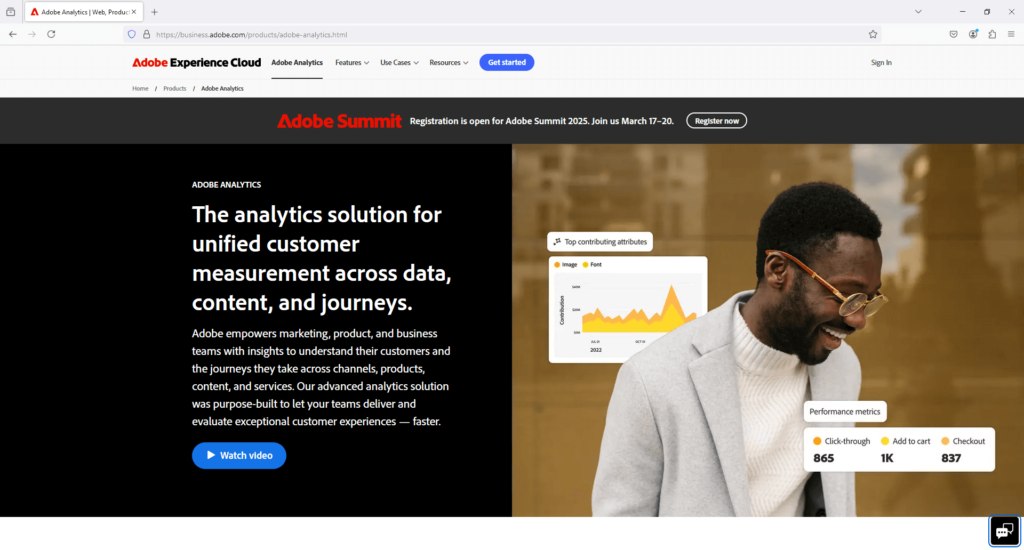
Data-Driven Decision Making
The integration of Adobe Marketing Cloud and Adobe Marketo Engage creates a powerful ecosystem for making smarter, faster marketing decisions.
- Real-time analytics: Monitor trends and respond instantly to market changes, ensuring campaigns remain effective.
- Predictive analytics with Adobe Sensei AI: Forecast customer behaviors and trends with precision, enabling proactive adjustments.
- Customizable dashboards: Simplify complex data into intuitive, shareable formats that support better collaboration and insight-driven strategies.
With these tools, marketers can craft campaigns that are not only efficient but also highly personalized, enhancing the overall customer experience and driving growth.
Unlocking Marketing Excellence
By combining robust analytics, advanced attribution models, and seamless integration with the Adobe Marketing Suite, Adobe Marketing Analytics equips marketers to excel in an increasingly data-driven world. This platform delivers the insights necessary to refine strategies, optimize budgets, and create meaningful, impactful campaigns that resonate with customers.
“A study by Forest Consulting revealed that businesses using the Adobe Experience Cloud, including Adobe Marketing Analytics, experienced an ROI of over 330%.“
Integration with Marketing Campaigns
Adobe Marketing Analytics seamlessly integrates with your marketing efforts, acting as a critical tool for campaign optimization, ROI enhancement, and strategic alignment across platforms. This integration with the broader Adobe marketing suite, including Marketo Engage and Adobe Advertising Cloud, amplifies its effectiveness in delivering data-driven results.
Marketing Strategy Optimization
Adobe Marketing Analytics helps refine and elevate marketing strategies by offering:
- Detailed performance metrics: Track the success of campaigns across multiple channels to identify what works and what needs improvement.
- Audience segmentation: Develop targeted campaigns by analyzing rich behavioral data and creating precise audience profiles.
- A/B testing tools: Experiment with different content and user experiences to optimize engagement and conversions.
When paired with Marketo Engage, these capabilities are further enhanced. The integration aligns marketing automation with analytics, enabling the creation of highly personalized campaigns informed by behavioral insights. This synergy ensures that marketing strategies are not only data-driven but also deeply attuned to customer needs.
Enhancing Return on Investment (ROI)
Driving ROI is a cornerstone of Adobe Marketing Analytics, particularly when used alongside Adobe Advertising Cloud. The platform delivers:
- Comprehensive performance tracking: Monitor every aspect of your campaigns, from clicks to conversions.
- Advanced attribution models: Accurately evaluate the impact of each channel on your marketing outcomes.
- Integrated cost analysis: Combine cost data with performance metrics for a true picture of ROI.
A study by Forrester Consulting revealed that businesses using the Adobe Experience Cloud, including Adobe Marketing Analytics, experienced an ROI of over 330%. This underscores the platform’s ability to not only measure success but also significantly enhance it.
Adobe Marketing Analytics in Action
Companies across industries have leveraged Adobe Marketing Analytics to transform their marketing efforts and achieve outstanding results. By integrating with other Adobe products, businesses have been able to:
- Optimize multi-channel campaigns with detailed insights.
- Scale personalized marketing efforts to drive engagement.
- Achieve measurable growth through informed, data-driven decisions.
The platform’s integration capabilities create a cohesive ecosystem, empowering marketers to deliver consistent, impactful campaigns across every customer touchpoint.
Advanced Visualization Tools
Adobe Marketing Analytics empowers marketers with cutting-edge data visualization tools designed to transform complex datasets into clear, actionable insights. These advanced capabilities simplify analysis, enhance storytelling, and enable data-driven decision-making at scale.
Key Visualization Features
Analysis Workspace
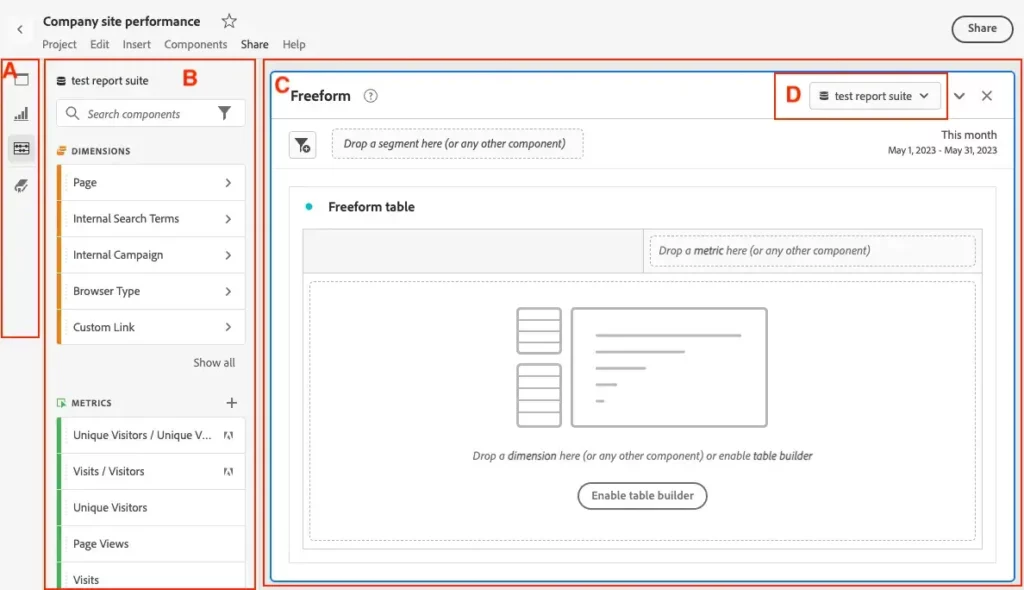
| Location | Name and Function |
|---|---|
| Ⓐ | Header: Displays the project name, a menu for functionality access, a ChevronLeft button to return to the Project list, and a Share button for sharing projects. You can rename the project by selecting its name (e.g., “New project”) and mark it as a favorite using the StarOutline icon. |
| Ⓑ | Button Panel: Provides access to core features of Analysis Workspace. |
| Ⓒ | Left Panel: Displays panels, visualizations, components, or lists, based on the selected button in the Button Panel. |
| Ⓓ | Canvas: The primary workspace where you build projects by dragging items from the Left Panel. It updates dynamically as you add panels, visualizations, or components. Each panel is linked to a data view, which determines available metrics and dimensions. Multiple panels and visualizations can be created within the Canvas. |
A versatile canvas for building custom dashboards and reports, Analysis Workspace offers:
- Drag-and-drop functionality: Simplify report creation with an intuitive interface.
- Interactive visualizations: Explore real-time data to uncover trends and opportunities.
- Multi-visualization projects: Combine diverse visual elements into cohesive, insightful reports.
Diverse Visualization Options
Adobe Marketing Analytics provides a variety of visual formats to suit every analytical need:
- Trend analysis: Bar charts, line graphs, and scatter plots for tracking patterns.
- Hierarchical representation: Donut charts and treemaps for visualizing relationships.
- Distribution analysis: Histograms to explore data spread.
- Retention and churn insights: Cohort tables to understand audience behavior over time.
- Customer journeys: Flow diagrams to map user interactions and identify key touchpoints.
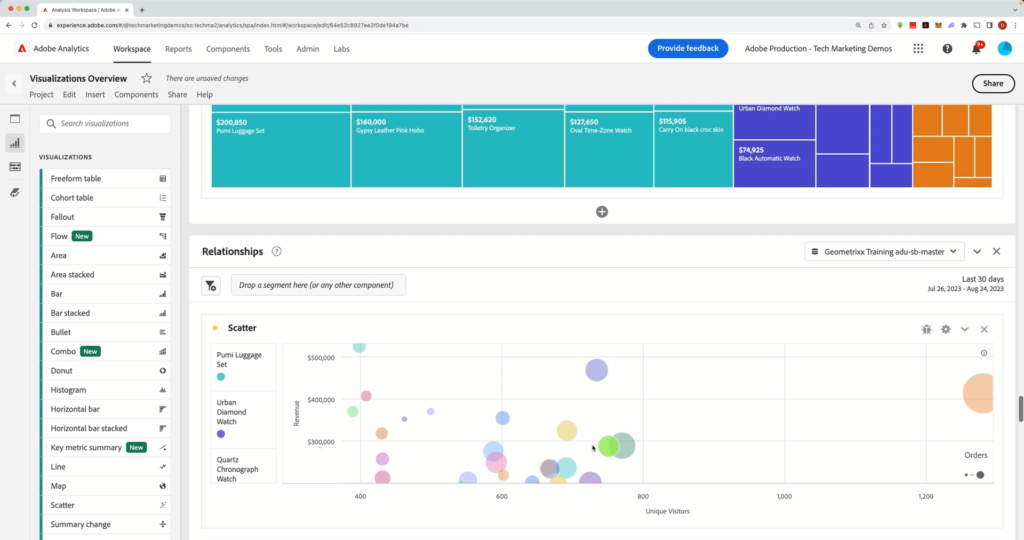
Custom Dashboards
Tailor dashboards to focus on specific KPIs and metrics aligned with your business goals, enabling teams to zero in on what matters most.
Real-Time Reporting
Stay agile with visualizations that update instantly, offering immediate insights for on-the-fly decision-making.
Segmentation Capabilities
Look further into audience analysis by applying advanced segments to visualizations, revealing granular insights for targeted strategies.
AI-Powered Insights
- Anomaly detection: Adobe’s AI highlights statistically significant changes in trends, making them easy to identify and address.
- Contribution analysis: Automatically identifies and visualizes the factors driving anomalies, streamlining exploration and saving time.
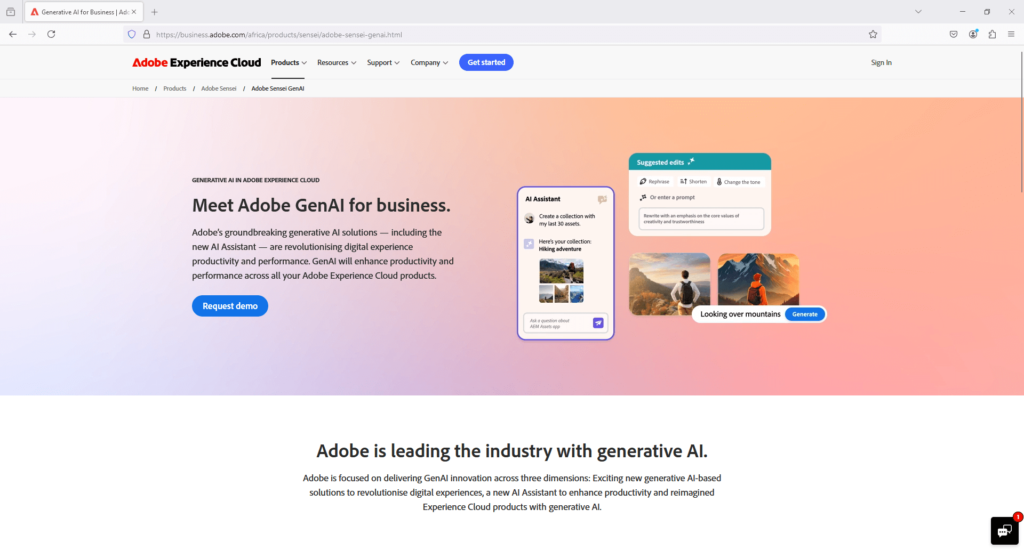
Mobile Access
With Adobe Analytics’ mobile app, stakeholders can access key visualizations and reports anywhere, ensuring insights are always within reach.
These features not only enhance the understanding of your data but also enable your team to act with confidence and agility in a dynamic marketing environment.
Practical Implementation Tips for Adobe Marketing Analytics
Maximizing the potential of Adobe Marketing Analytics begins with effective implementation and optimization strategies. Here are actionable tips to streamline your setup and enhance analytics performance:
Use AEP Launch for Seamless Integration
Leverage Adobe Experience Platform (AEP) Launch, now referred to as Tags, for an efficient and simplified implementation process:
- Streamlined adoption: Easily integrate Adobe Analytics with other Experience Cloud solutions.
- Up-to-date libraries: Access frequently updated extensions for enhanced functionality.
- User-friendly interface: Maintain and configure settings with ease.
Develop an Event-Driven Data Layer Strategy
Optimize tracking with an Event-Driven Data Layer (EDDL):
- Unified tracking tool: Simplify event context and action tracking.
- Adobe Launch compatibility: Ensure seamless integration for monitoring.
- Centralized management: Use the Data Layer Manager extension for streamlined oversight.
“These features not only enhance the understanding of your data but also enable your team to act with confidence and agility in a dynamic marketing environment.”
Utilize Launch Extensions for E-Commerce
Simplify product string creation for e-commerce using Launch extensions:
- Product String Builder extension: Efficiently work with event-driven data layers.
- Enhanced eVars: Easily add merchandising eVars and custom success events.
- Robust debugging: Utilize advanced debugging features to ensure accuracy.
Leverage Merchandising eVars
Enhance analytics capabilities by incorporating merchandising eVars:
- Preserve metadata: Retain detailed product information without additional imports.
- Correlate search terms: Connect online search behaviors to product purchases.
- Measure promotions: Assess the impact of onsite promotions on sales.
Establish Calculated Metrics
Create customized metrics for deeper insights tailored to your business goals:
- Custom metrics in Analysis Workspace: Go beyond basic KPIs like conversion and bounce rates.
- Specific business needs: Design metrics aligned with your strategic objectives.
Import Product Cost Data
Integrate product cost data to improve reporting accuracy:
- Profitability analysis: Identify your most profitable products.
- Comprehensive performance view: Gain insights into product performance at a granular level.
Integrate Advertising Data
Harness the full potential of advertising analytics integration:
- Import from Google Ads and Bing Ads: Analyze key metrics such as impressions, clicks, and costs.
- Advanced insights: Leverage integration capabilities available in Select, Prime, and Ultimate SKUs of Adobe Analytics.
Optimize Calendar Settings
Adopt the 4-5-4 retail calendar for consistent reporting:
- Uniform reporting periods: Ensure equal weekends across months for easier comparisons.
- Simple configuration: Set up in your report suite for streamlined use.
Empower Your Marketing Analytics
By implementing these practical tips, you can unlock the full potential of Adobe Marketing Analytics. From refining data collection strategies to integrating advanced advertising insights, these steps ensure a more efficient, accurate, and impactful analytics experience.ve data-driven marketing strategies.
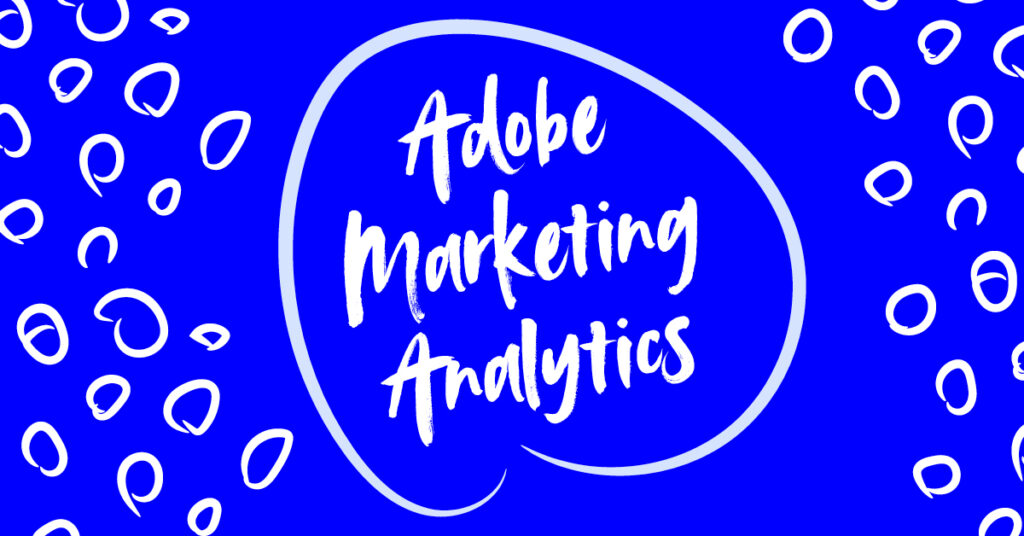
Common Pitfalls When Implementing Adobe Marketing Analytics
| Category | Challenge | Impact |
|---|---|---|
| Data Accuracy and Consistency | Improper tracking code placement, misconfigured tags, or incorrect parameters. | Leads to inaccurate or incomplete data collection. |
| Inconsistent data across touchpoints. | Results in misleading insights. | |
| Complex Implementation | Extensive customization options can overwhelm businesses unfamiliar with the platform. | May lead to collecting irrelevant data or missing critical insights. |
| Misunderstanding tool flexibility. | Requires significant time and planning to fully leverage capabilities. | |
| Integration Difficulties | Technical complexities when integrating with other marketing tools and platforms. | Can create data silos, leading to incomplete customer views and inaccurate targeting. |
| Tag Management Complexities | Managing tracking tags across multiple platforms is challenging for complex websites or apps. | Mismanagement can cause slow page load times or performance issues. |
| Documentation and Governance | Lack of documentation on data population and custom implementations. | Inadequate variable mapping or solution designs may hinder analytics effectiveness. |
| Limited understanding of integrations and plugins. | ||
| User Adoption and Learning Curve | High learning curve and complex interface may require extensive training. | Resistance from teams accustomed to legacy systems can slow adoption. |
Proactive Measures
By understanding these challenges, organizations can implement best practices, allocate resources effectively, and maximize the value of Adobe Marketing Analytics.
As you gain fresh insight from your data, it opens the door to new questions. As you have fresh questions, you need to update your instrumentation and analysis. Saying the process is ‘done’ is saying you understand everything there is to know about your users, product, and channels. -Brian Balfour, Founder and CEO of Reforge and Former VP of Growth at Hubspot
API and Third-Party Integrations
Adobe Marketing Analytics provides extensive integration capabilities through its API and a variety of pre-built connectors, allowing businesses to expand its functionality and seamlessly connect with third-party tools and data sources.
Adobe Analytics API
The Adobe Analytics API equips developers with tools to access and manipulate data, enabling deeper customization and automation. Key features include:
- RESTful architecture: Simplifies integration with existing systems.
- Custom report generation: Analyze data using specific attributes tailored to business needs.
- Support for HTTP methods: Use GET, POST, and other methods for flexible data access.
- Organized endpoints: Access resources like Reports, Metrics, Segments, and Dimensions efficiently.
Benefits of the API:
- Automate data retrieval and streamline reporting processes.
- Customize analysis to uncover insights beyond standard metrics.
- Access raw data for more granular exploration.
- Integrate Adobe Analytics data with internal systems or third-party applications.
Third-Party Integrations
Adobe Marketing Analytics enhances its capabilities through seamless connections with various third-party tools and platforms:
- Data Connectors: Pre-built API connections allow for quick setup using a drag-and-drop interface.
- Adobe Experience Cloud Exchange: Access over 200 integrations with leading technology partners, including Hootsuite, Invoca, Branch.io, and BrightEdge.
- Cloud Platform Integrations: Connect with data storage and analysis solutions like Microsoft Azure, Amazon S3, Google Big Query, and Snowflake.
- Third-Party Applications: Integrate with customer service, sales, and marketing tools like Microsoft Dynamics 365 and Salesforce.
Benefits of Third-Party Integrations:
| Benefit | Description |
|---|---|
| Combine external data sources | Integrate email pre-click data, offline voice interactions, and Adobe Analytics behavioral data for a holistic view. |
| Analyze multichannel campaign performance | Evaluate campaign effectiveness across platforms to gain enhanced insights. |
| Streamline workflows | Create a unified analytics ecosystem that improves efficiency and collaboration. |
Building a Customized Analytics Ecosystem
By combining the capabilities of the Adobe Analytics API and its broad range of third-party integrations, businesses can create a tailored analytics environment. This enables more precise data-driven decisions, better insights into multichannel marketing performance, and improved operational efficiency.
Competitive Landscape
While Adobe Marketing Analytics is a powerful platform, it’s essential to understand how it compares to other major analytics solutions in the market. Here’s a brief comparison of Adobe Marketing Analytics with some of its key competitors:
Adobe Marketing Analytics vs. Google Analytics
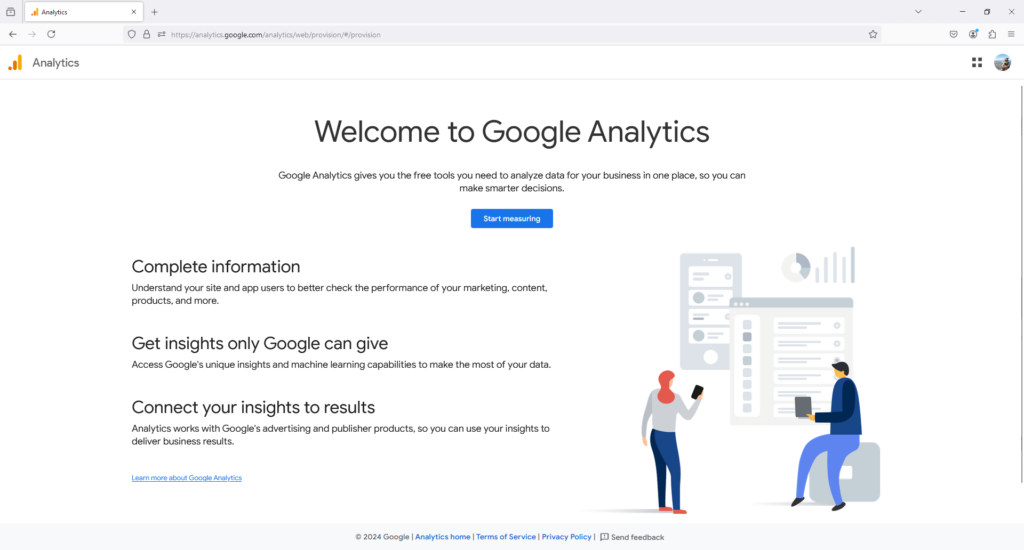
Google Analytics’ Key Features:
- Real-time data collection and reporting
- Audience segmentation and behavior analysis
- Conversion tracking and goal setting
- Custom dashboards and reports
- Integration with Google Ads and other Google services
Strengths of Google Analytics:
- Extensive integration with Google’s ecosystem
- Robust data visualization capabilities
- Advanced audience segmentation
- Comprehensive documentation and community support
- AI-driven insights and predictions
Challenges when using Google Analytics:
- Complex interface may require extensive training
- Manual event setup required
- Limited data storage (25 months for GA4)
Google Analytics‘ Pricing:
- Free version available with limited features
- Google Analytics 360 starts at $150,000/year for advanced features and enterprise support
Target Audience for Google Analytics:
Google Analytics is suitable for businesses of all sizes, from small websites to large enterprises, particularly those already using other Google services. It’s especially popular among marketers, data analysts, and business owners who need comprehensive web analytics and integration with Google Ads.
In Conclusion:
- Adobe offers more advanced customization options and deeper insights, while Google Analytics provides a more user-friendly interface for beginners.
- Adobe excels in cross-device tracking and attribution, whereas Google Analytics is stronger in integration with other Google products.
- Adobe’s pricing is generally higher, targeting enterprise-level clients, while Google offers a free version suitable for smaller businesses.
Adobe Marketing Analytics vs. Mixpanel
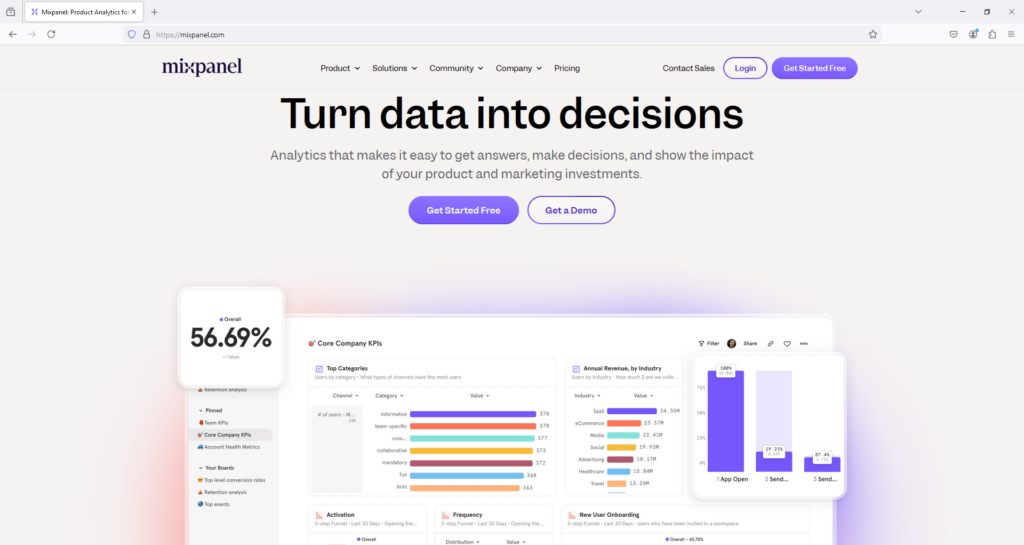
Mixpanel’s Key Features:
- Event tracking
- User segmentation
- Funnel analysis
- A/B testing
- Retention analysis
Mixpanel’s Strengths:
- Automatic data capture without tagging
- Retroactive analysis capabilities
- Comprehensive user journey insights
- User-friendly interface with intuitive UI patterns
Considerations before using Mixpanel:
- Complex implementation process
- High data storage costs
- Potentially unsuitable for smaller teams
Mixpanel’s Pricing:
- Free plan available for up to 10,000 monthly sessions
- Paid plans start at approximately $3,600 per year
Target Audience for Mixpanel:
Mixpanel is often favored by startups and growing businesses looking for comprehensive user behavior insights without extensive manual tagging. It’s especially popular among product teams focusing on user engagement and retention.
To Conclude:
Adobe Marketing Analytics offers a more comprehensive suite of tools for large enterprises with complex marketing ecosystems, while Mixpanel provides a more focused product analytics solution for businesses prioritizing user engagement and behavior analysis. The choice between the two depends on the specific needs, size, and resources of the organization.
Adobe Marketing Analytics vs. Amplitude
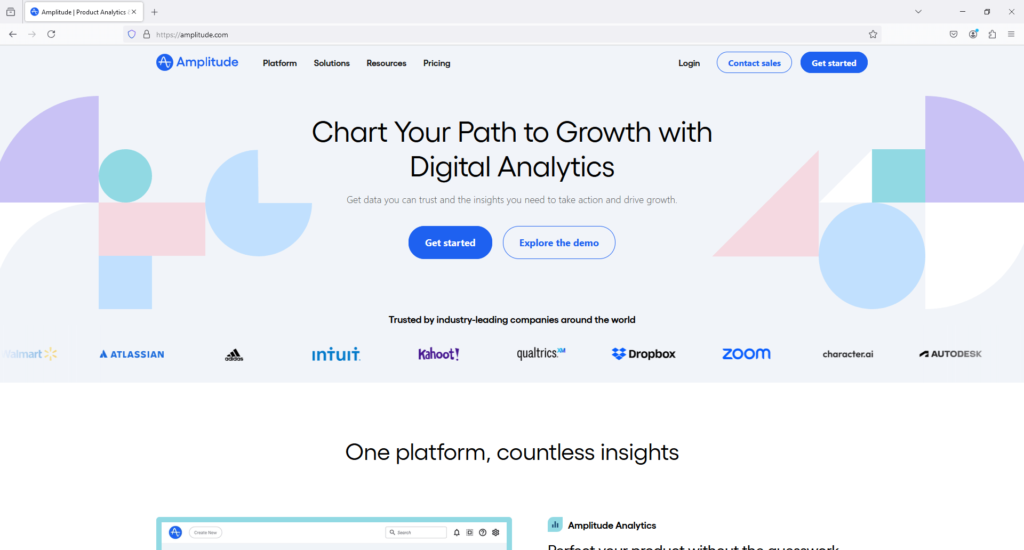
Amplitude’s Key Features:
- Event tracking and behavioral analytics
- User segmentation and cohort analysis
- Funnel analysis and retention tracking
- A/B testing and experimentation
- Predictive analytics with machine learning
Strengths in Amplitude:
- User-friendly interface with intuitive UI patterns
- Strong focus on product analytics and user behavior
- Comprehensive user journey insights
- Flexible integration with modern MarTech stacks
Considerations with Amplitude:
- May require additional tools for comprehensive marketing analytics
- Can be costly for large-scale implementations
- Some users report challenges with event tracking setup
Amplitude’s Pricing:
- Free starter plan available
- Growth plan starts at approximately $995 per month
- Enterprise plan pricing is customized based on needs
Amplitude’s Target Audience:
Amplitude is often favored by product teams and growth-focused companies looking for deep insights into user behavior and product performance. It’s especially popular among startups and digital-first businesses.
In Summary:
- Both platforms offer advanced user behavior analysis, but Amplitude has a stronger focus on product analytics and user engagement.
- Adobe provides more robust marketing campaign analysis and attribution modeling, while Amplitude offers superior cohort analysis capabilities.
- Amplitude is often preferred by product-led growth companies, whereas Adobe is favored by marketing-driven organizations.
Adobe Marketing Analytics vs. Matomo
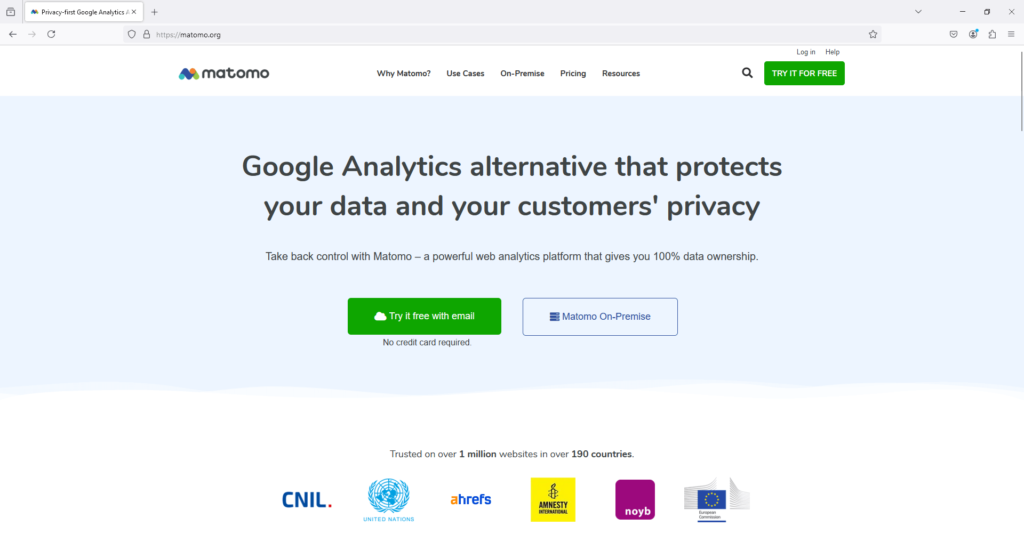
Key Features in Matomo:
- Real-time data updates
- Customizable dashboard
- Ecommerce analytics
- Goal conversion tracking
- User cohort analysis
- White label options
Matomo’s Strengths:
- Full data ownership and privacy control
- No data collection limits
- Open-source with extensive customization options
- Free self-hosted version available
Matomo’s Considerations:
- Self-hosted version requires technical expertise for setup and maintenance
- Smaller community and fewer resources compared to Adobe
- May lack some advanced features found in enterprise-level solutions
Pricing for Matomo:
- Free self-hosted version available
- Cloud-based plans start at $9 per month
- Enterprise plans available with custom pricing
Who uses Matomo:
Matomo is often favored by businesses of all sizes that prioritize data privacy and ownership. It’s especially popular among organizations that require full control over their analytics data and those looking for a cost-effective solution.
To wrap up:
- Adobe offers more advanced features and integrations, while Matomo focuses on providing a privacy-friendly, open-source alternative.
- Matomo gives users full data ownership and control, which is particularly appealing for privacy-conscious organizations.
- Adobe’s enterprise-level support and ecosystem integration are more extensive, while Matomo offers more flexibility in self-hosting and customization.
Adobe Marketing Analytics vs. Heap
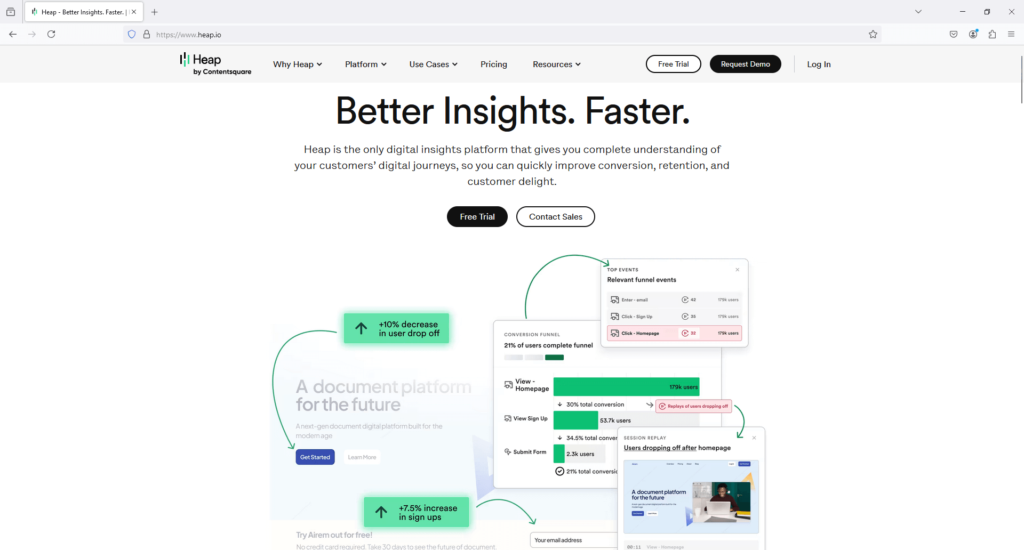
Heap’s Key Features:
- Automatic event tracking
- Funnel analysis
- Segmentation
- Event visualizer
- Retroactive analysis
Heap’s Strengths:
- Automatic data capture without tagging
- Retroactive analysis capabilities
- Comprehensive user journey insights
Heap’s Challenges:
- Complex implementation process
- High data storage costs
- Potentially unsuitable for smaller teams
Heap’s Pricing:
- Requires contacting Heap for detailed pricing
- Generally involves monthly or annual fees
- Free plan available for up to 10,000 monthly sessions
- Paid plans start at approximately $3,600 per year
Heap’s Target Audience:
Heap is often favored by startups and growing businesses looking for comprehensive user behavior insights without extensive manual tagging. Adobe Marketing Analytics is typically chosen by larger enterprises seeking a robust, integrated marketing ecosystem with advanced analytics capabilities.
Competitor Comparison: Features, Strengths, Weaknesses, and Pricing
| Platform | Key Features | Strengths | Challenges | Pricing | Target Audience |
|---|---|---|---|---|---|
| Google Analytics | Real-time data collection, audience segmentation, conversion tracking, custom dashboards, Google Ads integration | Extensive integration with Google ecosystem, robust visualization, AI-driven insights | Complex interface, manual event setup, limited data storage (GA4: 25 months) | Free (limited), GA 360: $150,000/year | Businesses of all sizes, particularly those using Google services; marketers, data analysts, business owners |
| Mixpanel | Event tracking, user segmentation, funnel analysis, A/B testing, retention analysis | Automatic data capture, retroactive analysis, user-friendly interface | Complex implementation, high data storage costs, less suitable for small teams | Free (up to 10K sessions), Paid: ~$3,600/year | Startups and product teams focusing on user engagement and retention |
| Amplitude | Behavioral analytics, cohort analysis, funnel tracking, A/B testing, predictive analytics | Product-focused insights, intuitive UI, flexible integrations | Costly for large-scale use, event tracking challenges, needs supplementary tools | Free (starter), Growth: ~$995/month, Custom Enterprise | Startups, product teams, and growth-focused companies needing deep user behavior analysis |
| Matomo | Real-time updates, ecommerce tracking, goal conversion, cohort analysis, customizable dashboards, white labeling | Full data ownership, privacy control, open-source customization | Requires technical expertise for self-hosting, smaller community resources | Free (self-hosted), Cloud: $9+/month, Custom Enterprise | Privacy-conscious businesses of all sizes, prioritizing data control and cost-effectiveness |
| Heap | Automatic event tracking, funnel analysis, segmentation, retroactive analysis | Automatic data capture, retroactive insights, comprehensive journey analysis | Complex implementation, high storage costs, less suitable for small teams | Free (up to 10K sessions), Paid: ~$3,600/year | Startups and businesses seeking in-depth journey insights without manual tagging |
Summary:
- Adobe Marketing Analytics targets enterprises with advanced integration and AI capabilities, excelling in cross-device tracking and campaign analytics.
- Google Analytics is user-friendly, ideal for Google ecosystem users and small-to-large businesses needing accessible web analytics.
- Mixpanel and Heap shine in product and user behavior analysis for startups, while Amplitude focuses on growth and cohort insights.
- Matomo offers a privacy-focused, customizable solution for businesses prioritizing full data ownership.
Adobe Marketing Analytics distinguishes itself through its comprehensive integration with the Adobe Experience Cloud, advanced AI capabilities via Adobe Sensei, and robust enterprise-level features. However, the choice between these platforms ultimately depends on an organization’s specific needs, budget, and existing technology stack.
Compliance and Data Governance
Adobe Marketing Analytics provides robust tools to ensure data privacy and regulatory compliance, helping businesses adhere to laws like the General Data Protection Regulation (GDPR) and the California Consumer Privacy Act (CCPA) while maintaining powerful analytics capabilities.
Data Privacy and Security Measures
Adobe Marketing Analytics prioritizes safeguarding sensitive data through:
- Encryption: Protects data in transit and at rest.
- Role-based access controls: Limits exposure by restricting access to authorized users.
- Regular security audits: Identifies and mitigates vulnerabilities proactively.
- Anonymization and pseudonymization tools: Protects personally identifiable information (PII) while enabling valuable insights.
Consent Management
The platform simplifies obtaining and managing user consent to align with privacy requirements:
- Opt-out links: Empower users to control the processing of their data.
- Opt-in services via Tags: Streamline comprehensive consent handling in the Adobe Experience Platform.
- Customizable consent solutions: Allow businesses to tailor mechanisms to their specific legal and operational needs.
Tools for GDPR and CCPA Compliance
Adobe Marketing Analytics includes features to meet the requirements of GDPR and CCPA, including:
- Data access and deletion capabilities: Fulfill user requests efficiently using the Privacy Service API and user interface.
- Data labeling and classification: Identify information actionable under CCPA for access or deletion.
- Opt-out options: Limit data sharing or selling to meet CCPA’s opt-out provisions.
Data Governance Best Practices
To maintain compliance, Adobe recommends:
- Regular change reviews: Ensure continued adherence to GDPR and similar regulations.
- Tag management systems: Monitor tag lifecycles and minimize unnecessary data collection.
- IP obfuscation and deletion: Enhance privacy by reducing identifiable information.
- Routine audits: Evaluate and refine data collection and processing practices.
By implementing these features and best practices, organizations can confidently navigate the complexities of data privacy regulations while utilizing Adobe Marketing Analytics to its full potential.
“Conducting thorough training sessions can empower employees to use Adobe Marketing Analytics effectively.”
Challenges and Considerations
Implementing Adobe Marketing Analytics can be a challenging process, particularly for large organizations with complex tech stacks and diverse data sources. A phased approach is often the best way to tackle this complexity. By prioritizing key use cases and gradually expanding functionality, businesses can ensure a smoother rollout and avoid being overwhelmed by the platform’s extensive capabilities.
To further streamline the process, leveraging the expertise of Adobe’s implementation specialists or certified partners is highly recommended. These professionals can help ensure that the platform is set up and configured correctly, minimizing potential errors and delays.
Equally important is equipping your team with the knowledge and skills needed to maximize the platform’s potential. Conducting thorough training sessions can empower employees to use Adobe Marketing Analytics effectively, reducing dependence on external support and enabling them to extract meaningful insights independently.
Data Quality and Consistency
Ensuring data quality and consistency across multiple touchpoints is crucial for accurate analysis. To address this:
- Implement a robust data governance framework, including clear data collection standards and naming conventions.
- Regularly audit your data collection processes and use Adobe’s debugging tools to identify and resolve tracking issues.
- Utilize Adobe’s data connectors and ETL tools to standardize data from various sources before analysis.
User Adoption and Change Management
Introducing a new analytics platform can face resistance from teams accustomed to legacy systems. To promote adoption:
- Develop a comprehensive change management plan, including clear communication of benefits and training programs.
- Create role-specific dashboards and reports to demonstrate immediate value to different stakeholders.
- Establish a center of excellence to provide ongoing support and share best practices across the organization.

Performance Optimization
As data volumes grow, maintaining system performance can become challenging. To ensure optimal performance:
- Regularly review and optimize your implementation, removing unused variables and streamlining data collection.
- Leverage Adobe’s segmentation and virtual report suites to manage data processing efficiently.
- Utilize Adobe’s data sampling techniques for large-scale analyses without compromising processing speed.
Cross-Channel Attribution
Accurately attributing conversions across multiple channels and devices remains a challenge. To improve attribution:
- Implement Adobe’s Cross-Device Analytics to create a unified customer view across touchpoints.
- Experiment with different attribution models in Adobe Analytics to find the best fit for your business.
- Combine online and offline data using Adobe’s Data Sources feature for a more comprehensive attribution picture.
By addressing these common implementation hurdles, organizations can maximize the value of their Adobe Marketing Analytics investment and drive more effective data-driven marketing strategies.
AI and Machine Learning Capabilities
Adobe Marketing Analytics harnesses the power of Adobe Sensei, the platform’s advanced AI and machine learning framework, to deliver predictive and analytical capabilities that transform how marketers interpret data and execute campaigns. These AI-driven features streamline complex tasks, uncover actionable insights, and enable smarter, faster decision-making.
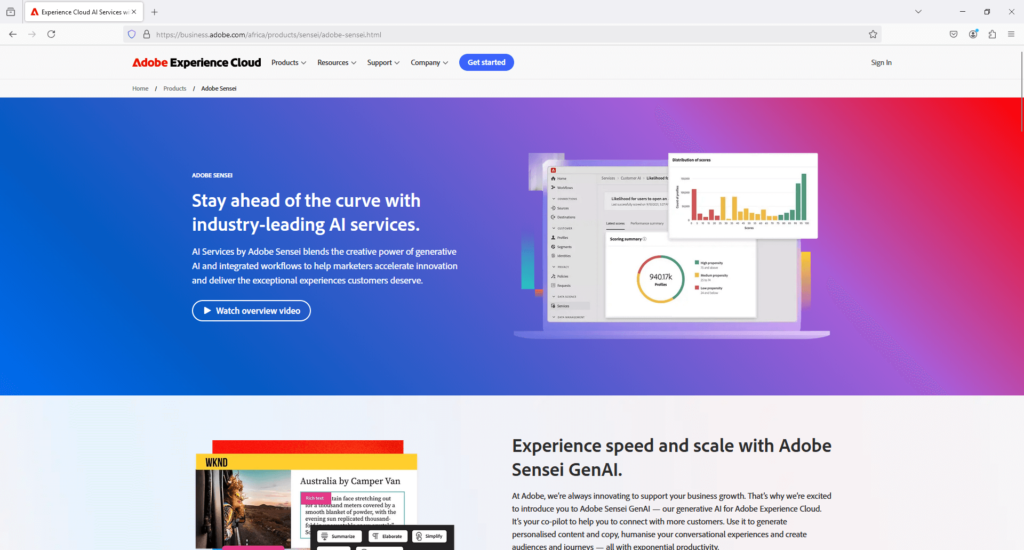
Key AI-Driven Features
📊Anomaly Detection
Adobe Sensei’s machine learning algorithms monitor customer behavior across dimensions, metrics, and segments to identify statistically significant changes in data patterns. This helps marketers quickly spot unusual trends or behaviors requiring immediate attention.
📈Contribution Analysis
When anomalies are detected, AI evaluates and ranks the factors causing these changes. By automating this analysis, Adobe Sensei saves marketers hours of manual data exploration and enables quicker problem resolution.
🔔Intelligent Alerts
Powered by machine learning, this feature sends notifications only for significant data changes. By considering the broader context of marketing data, these alerts reduce noise and ensure marketers focus on critical developments.
📉Predictive Analytics
Adobe Sensei analyzes historical data to forecast future trends, customer behaviors, and KPIs. This includes predicting metrics like revenue, customer acquisition rates, and product demand, allowing marketers to plan proactively.
👥Audience Clustering
AI automatically segments audiences based on shared characteristics and behaviors, enabling more precise targeting and personalized marketing campaigns.
🎯Propensity Scoring
Machine learning models predict the likelihood of specific customer actions, such as making a purchase or churning. These insights empower marketers to implement timely, proactive strategies to influence outcomes.
🤖Automated Personalization
Adobe Sensei analyzes user profiles and behaviors to deliver personalized content and recommendations across channels, enhancing customer engagement and experience.
🏷️Smart Tagging
AI automates the generation of descriptive tags and metadata for digital assets, improving content organization and searchability while saving time on manual tagging tasks.
Transforming Marketing with AI
By integrating these AI capabilities, Adobe Marketing Analytics enables marketers to:
- Uncover deeper insights: Gain a clearer understanding of customer behaviors and trends.
- Automate complex tasks: Save time and resources through intelligent automation.
- Enhance decision-making: Use data-driven predictions to guide marketing strategies.
This combination of advanced technology and powerful analytics ensures more effective campaigns, improved customer experiences, and measurable business outcomes. Adobe Marketing Analytics, powered by Adobe Sensei, is redefining what’s possible in modern marketing.
Cross-Device Analytics
Adobe Marketing Analytics transforms how marketers view customer interactions through its Cross-Device Analytics (CDA) capabilities. By shifting from a device-centric perspective to a person-centric one, CDA provides a comprehensive understanding of the customer journey across multiple devices and touchpoints.
“Know your customer’s behavior across any device through a single journey stream.”
Adobe’s Cross-Device Analytics
Key Features of Cross-Device Analytics
Unified Customer View
CDA stitches together interactions across devices- desktops, smartphones, tablets, and apps- into a single, cohesive journey stream. This ensures a holistic understanding of customer behaviors.
Person-Centric Metrics
The platform introduces metrics like People and Unique Devices, replacing traditional “Unique Visitors” metrics. These updated measurements deliver more precise insights into audience size and engagement patterns.
Historical Data Integration
CDA retroactively connects visitor profiles across devices, integrating historical data for richer, more accurate insights into long-term customer behaviors.
Advanced Segmentation
Marketers can create cross-device audience segments, such as users who start a journey on one device and complete it on another. These segments enable highly targeted and context-aware marketing strategies.
Enhanced Attribution
By including touchpoints across devices, CDA improves attribution modeling, offering a more accurate evaluation of how channels and devices contribute to conversions.
Improved Fallout Analysis
CDA enhances fallout visualizations, allowing marketers to track how users navigate a sequence of steps across devices. This detailed view helps identify where drop-offs occur and how to address them.
Benefits of Cross-Device Analytics:
| Benefit | Description |
|---|---|
| Understand device-switching behaviors | Gain insights into how often and why customers switch devices during their journey. |
| Deliver consistent experiences | Ensure personalized, seamless interactions across all touchpoints, regardless of device. |
| Optimize strategies holistically | Use a complete view of the customer journey to refine campaigns and improve outcomes. |
| Improve attribution accuracy | Allocate resources more effectively by identifying the true impact of each touchpoint on ROI. |
Cross-Device Analytics enables marketers to move beyond siloed, device-specific data, providing the clarity needed to understand and engage customers in a complex digital ecosystem. With this tool, Adobe Marketing Analytics ensures businesses can craft more informed strategies and deliver exceptional, unified experiences.
Integration with Adobe Experience Platform
The integration of Adobe Marketing Analytics with the Adobe Experience Platform (AEP) elevates its capabilities, offering marketers a unified, data-driven approach to customer insights and campaign execution. This powerful combination ensures a more comprehensive solution for creating targeted, personalized marketing strategies.
Key Benefits of the Integration
Unified Customer Profiles
By accessing the Real-Time Customer Profile feature in AEP, Adobe Marketing Analytics gains a holistic view of each customer. This profile consolidates data from multiple sources- online, offline, CRM systems, and third-party platforms- providing a complete picture of customer interactions and preferences.
Real-Time Data Processing
The integration enables real-time data collection and analysis, allowing marketers to adapt instantly to customer behaviors and shifting market trends. This capability ensures campaigns remain agile and relevant.
Enhanced Segmentation
The combination of advanced analytics in Adobe Marketing Analytics and the rich, unified data from AEP empowers marketers to build sophisticated audience segments. These segments improve targeting accuracy and drive more impactful campaigns.
Cross-Channel Activation
Marketers can seamlessly activate audience segments across various channels, ensuring a consistent and personalized customer experience throughout the buyer’s journey. This cross-channel activation capability enhances engagement and conversion rates.
Data Governance and Privacy
The integration includes robust tools for data governance, helping organizations manage customer information responsibly while adhering to privacy regulations like GDPR and CCPA. These measures ensure compliance across all marketing activities.
Elevating the Adobe Experience Cloud Ecosystem
This integration positions Adobe Marketing Analytics as a pivotal element within the broader Adobe Experience Cloud ecosystem. By combining deep analytics capabilities with the unified data and real-time processing power of Adobe Experience Platform, businesses can:
- Gain a comprehensive understanding of their customers.
- Deliver consistent, personalized experiences across touchpoints.
- Create data-driven strategies that drive measurable results.
Together, Adobe Marketing Analytics and Adobe Experience Platform empower organizations to excel in delivering exceptional customer experiences and achieving strategic marketing goals.

Future Trends and Upcoming Features
Adobe Marketing Analytics continues to evolve, with several exciting developments and trends anticipated to redefine its capabilities in the coming year. These innovations aim to further empower marketers with advanced tools for personalization, analysis, and decision-making in a rapidly changing digital landscape.
💡Enhanced AI and Machine Learning Capabilities
Adobe is expanding the scope of Adobe Sensei, its AI and machine learning framework, to introduce:
- Predictive Modeling: Advanced algorithms for forecasting customer behavior and campaign performance, enabling proactive marketing strategies.
- Anomaly Detection: Improved techniques to identify unusual patterns in data, ensuring swift issue resolution.
- Automated Insights: Tools that automatically highlight actionable trends, reducing the need for manual analysis.
💡Augmented Analytics
Future updates will include augmented analytics features designed to simplify data exploration:
- Natural Language Processing (NLP): Allowing marketers to query data using plain language, making insights more accessible to non-technical users.
- Automated Insight Discovery: AI-driven tools to uncover key insights from complex datasets, speeding up decision-making processes.
💡Enhanced Cross-Channel Attribution
Adobe plans to advance its cross-channel attribution capabilities to provide a more comprehensive view of customer interactions:
- Granular Attribution Models: More detailed models that factor in an increasing number of touchpoints and interactions.
- Real-Time Attribution Analysis: Tools for immediate assessment of campaign effectiveness, enabling on-the-fly adjustments.
💡Privacy-Centric Features
To address evolving privacy regulations, Adobe is focusing on features that ensure compliance while preserving analytical power:
- Advanced Data Anonymization: Techniques that protect user privacy without compromising analytical insights.
- Enhanced Consent Management: Improved tools to manage user consent directly within the analytics workflow, simplifying compliance efforts.
💡Integration with Emerging Technologies
Adobe is exploring innovative integrations with cutting-edge technologies to expand its analytics capabilities:
- Blockchain Technology: For transparent and secure data management and sharing.
- Edge Computing: To process data closer to its source, enabling faster real-time analytics and reduced latency.
💡Enhanced Visualization Tools
Anticipated improvements in data visualization aim to make analytics more intuitive and impactful:
- Interactive Dashboards: Highly customizable dashboards to tailor data visualization to individual needs.
- Advanced Reporting Features: New tools for deeper analysis of specific metrics and KPIs, improving strategic planning and decision-making.
🧭Looking Ahead
Adobe Marketing Analytics is poised to remain at the forefront of marketing technology by incorporating these forward-looking features. With a focus on AI, privacy compliance, and innovative integrations, Adobe continues to provide solutions that adapt to the complexities of the modern digital landscape, empowering marketers to create more personalized, data-driven campaigns and achieve meaningful results. To see the transformative power of these tools in action, let’s explore real-world case studies showcasing how businesses have leveraged Adobe Marketing Analytics to drive growth and success.
Case Study 1: Optimizing Customer Experience

Canon USA, a global leader in imaging technology, leveraged Adobe Marketing Analytics to revolutionize its digital presence and elevate the customer experience. By implementing solutions within the Adobe Experience Cloud, including Adobe Marketing Analytics, Canon USA achieved significant results:
- 150% growth in conversion rates year over year
- 73% increase in holiday sales growth year over year
- 25% rise in mobile traffic
- 20% reduction in bounce rate
Specific Marketing Challenges
Canon USA faced several challenges before implementing Adobe Marketing Analytics:
- Disconnected marketing and commerce sites causing customer confusion
- Difficulty in tracking cross-channel customer journeys
- Inability to personalize content at scale
- Inefficient campaign attribution
Data-Driven Decision Making
Adobe Marketing Analytics empowered Canon USA to base decisions on actionable insights derived from real-time data. By analyzing customer behavior across touchpoints, Canon gained a comprehensive view of the customer journey. AI-powered anomaly detection helped identify unexpected trends, while predictive analytics enabled the team to forecast campaign performance with greater accuracy.
Campaign Optimization
With access to advanced tools, Canon USA was able to fine-tune its marketing campaigns for maximum impact. A/B testing of landing pages and email content allowed the company to determine what resonated most with its audience. Dynamic content personalization, driven by user behavior, ensured tailored experiences for customers. Additionally, cross-channel attribution modeling informed smarter budget allocation across platforms.
ROI Measurement
To assess the effectiveness of its marketing efforts, Canon USA leveraged Adobe’s advanced attribution models to accurately measure ROI. By calculating Customer Lifetime Value (CLV) and analyzing Customer Acquisition Cost (CAC) across channels, Canon gained valuable insights into which strategies delivered the best returns. This data-driven approach ensured optimized resource allocation and improved marketing performance.
“Canon USA transformed its digital strategy, delivering exceptional customer experiences…”
Key Strategies and Integrations
To streamline its digital operations, Canon USA integrated Adobe Experience Manager Sites and Assets with Adobe Commerce, resulting in a unified and seamless storefront experience. This integration enabled them to:
- Merge marketing and commerce sites: Delivering a cohesive and intuitive user journey
- Optimize SEO and drive organic traffic: Enhancing visibility and attracting more qualified leads
- Streamline content and asset management: Simplifying workflows for marketing teams
- Personalize multichannel experiences: Tailoring content and offers to individual customer needs
Results of Adobe Marketing Analytics Implementation
Canon USA’s adoption of Adobe Marketing Analytics provided critical insights that fueled their success:
- Accelerated project timelines: Faster development cycles for new initiatives
- Reduced site support needs: Lower operational overhead for maintaining the digital ecosystem
- Consistent messaging: Unified communication across various business verticals
- Scalability and reliability: A robust platform foundation to support sustainable e-commerce growth
Compliance and Data Governance
Canon USA prioritized data privacy and compliance by leveraging Adobe Marketing Analytics’ robust governance features. The company implemented consent management tools to align with GDPR and CCPA regulations, ensuring customer data was collected and handled responsibly. These measures not only safeguarded customer trust but also solidified Canon’s commitment to maintaining regulatory compliance across its digital operations.
Future-Proofing
Adobe’s solutions positioned Canon USA to adapt seamlessly to future marketing challenges. The implementation ensured readiness for a cookieless tracking environment, preparing the company for evolving privacy standards. Additionally, the platform’s flexibility enabled the integration of emerging channels and technologies, ensuring Canon could remain competitive in a rapidly changing digital ecosystem.
By embracing Adobe’s integrated solutions, Canon USA transformed its digital strategy, delivering exceptional customer experiences while meeting the demands of a fast-evolving e-commerce landscape.
Case Study 2: Enhancing Mobile App Engagement
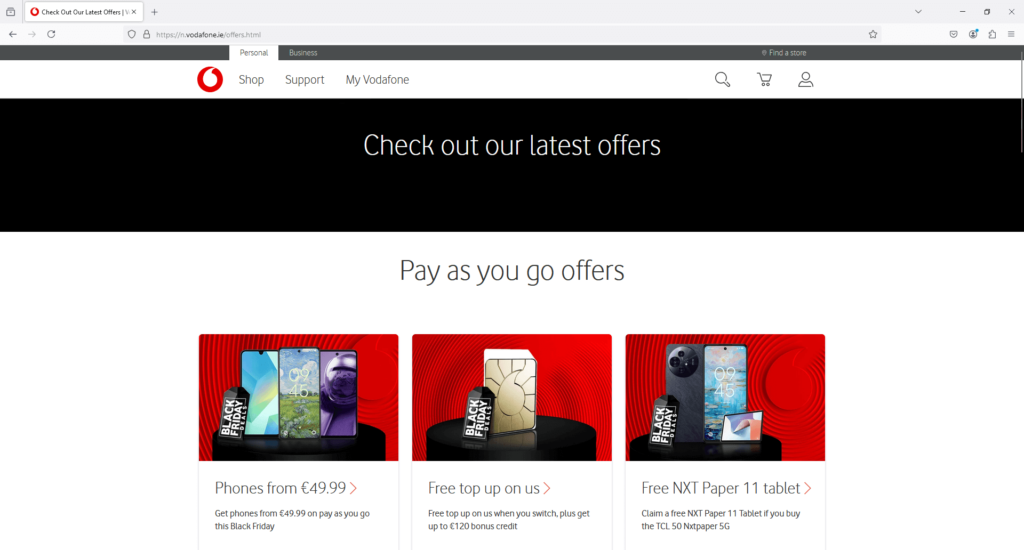
Vodafone Ireland, a leading telecommunications company, leveraged Adobe Marketing Analytics to transform the performance of its mobile app, achieving remarkable engagement and conversion rates. By incorporating Adobe Analytics and Adobe Target, Vodafone Ireland successfully:
- Delivered personalized experiences across all customer segments
- Increased app downloads to over 422,000
- Reached approximately 200,000 unique monthly active users
- Attained the highest engagement rate among Vodafone apps across Europe
- Achieved up to 50,000 daily active users
Strategies for Success
Vodafone Ireland utilized Adobe solutions to craft highly targeted and relevant customer interactions:
- Deep data insights: Refined messaging by diving deeper into customer data and segments to refine messages.
- In-app personalization: Delivered targeted interactions through in-app messages and offers based on audience segment data.
- Push notifications: Sent personalized alerts based on customer behavior and location, such as targeted notifications when customers pass by a store.
- Timely updates: Provided personal updates and reminders when minutes are low, helping customers avoid negative experiences like dropped calls.
- Targeted promotions: Supported core marketing activities with special offers tailored to each segment, such as holiday gift sets for pay-as-you-go customers.
The Role of Adobe Marketing Cloud
“Using Adobe Marketing Cloud, we can tap into data to see what our customers are doing and what they’re responding to and then make those experiences better across all our digital touchpoints.”
-Brian Corish, Head of Digital at Vodafone Ireland
The integration of Adobe Marketing Analytics with other Adobe marketing solutions enabled Vodafone Ireland to achieve a cohesive and effective digital strategy, enhancing customer experiences and driving sustained app engagement. This approach resulted in the highest engagement rate among Vodafone apps across Europe, demonstrating the power of data-driven, personalized marketing strategies.
The Bigger Picture
This success story underscores the power of Adobe Marketing Analytics when paired with other Adobe tools like Adobe Target and Adobe Analytics. With these technologies, businesses can uncover deep customer insights, optimize marketing strategies, and deliver personalized experiences that boost engagement and conversions across all channels.
Integration with Existing Systems
Creating a unified marketing ecosystem through seamless integration of Adobe Marketing Analytics with existing tools is essential for maximizing value. However, integration can pose challenges without careful planning.
Common Integration Challenges and Solutions
Data Silos
Fragmented data across platforms can result in incomplete customer views and inaccurate targeting.
- Solution 1: Use Adobe’s pre-built functionalities for seamless data exchange between platforms like Marketo and Adobe Analytics.
- Solution 2: Implement Adobe Organization Mapping to connect platform IDs (e.g., Marketo person IDs and Adobe Analytics visitor IDs).
Manual Data Transfer
Moving data manually is time-consuming and prone to errors.
- Solution 1: Leverage automated syncing between Adobe Marketing Analytics and other tools to ensure accurate, real-time data sharing.
- Solution 2: Utilize advanced data mapping options from Adobe partners to integrate specific data points, such as campaign details and lead stages.
Inconsistent Customer Experience
Disjointed systems can result in conflicting messaging and poor customer experiences.
- Solution 1: Integrate Marketo Engage with Adobe Analytics for a unified customer view, enabling targeted and consistent campaigns.
- Solution 2: Use Adobe Sensei-powered predictive content features to personalize interactions across email and web channels.
Building a Secure and Unified Marketing Ecosystem
Adobe Marketing Analytics empowers marketers to protect customer data while ensuring compliance with global regulations, streamline workflows through automated data sharing, and deliver consistent, personalized experiences across touchpoints. With robust features and seamless integration capabilities, the platform provides a powerful and secure foundation for data-driven decision-making, enabling enhanced marketing performance at every level.
Wrapping Up: Your Journey to Marketing Excellence
Adobe Marketing Analytics is a transformative tool in the world of data-driven marketing, providing marketers with a robust suite of capabilities to make informed decisions and optimize strategies. This platform does far more than collect and report data; it empowers organizations to extract actionable insights that drive meaningful results.
By leveraging Adobe Marketing Analytics, marketers can:
✅ Gain a holistic view of customer journeys across touchpoints.
✅ Utilize advanced attribution models to measure the true impact of campaigns.
✅ Harness real-time insights for agile decision-making and trend capitalization.
✅ Scale personalized experiences, boosting engagement and conversions.
When integrated with other Adobe marketing solutions, such as Marketo Engage and Adobe Advertising Cloud, Adobe Marketing Analytics creates a seamless ecosystem that:
✅ Facilitates cross-channel campaign management.
✅ Enhances data flow between automation and analytics platforms.
✅ Accurately measures ROI across paid and organic channels.
As seen in the case studies, adopting Adobe Marketing Analytics enables organizations to achieve exceptional outcomes, such as increased conversions, enhanced engagement, and more effective resource allocation.
While the platform offers unparalleled power, it’s essential to address implementation challenges, such as data privacy concerns and system integration complexities. With Adobe’s robust security features and integration tools, these hurdles can be mitigated effectively.
In a world where data reigns supreme, Adobe Marketing Analytics stands as a leader in transforming raw data into actionable intelligence. By offering deep insights into customer behaviors and preferences, it empowers businesses to craft more effective, targeted, and personalized marketing campaigns.
As the role of analytics in marketing continues to grow, Adobe Marketing Analytics remains at the forefront, ready to adapt and evolve alongside an ever-changing digital landscape. It’s a solution for marketers seeking to not just stay competitive but to excel in an increasingly data-driven world.

Your Next Step Toward Data-Driven Marketing
Ready to elevate your marketing strategies with Adobe Marketing Analytics? Here’s how to take the next step toward data-driven success:
🔍 Explore Adobe Marketing Cloud: Schedule a demo to see how Adobe Marketing Analytics integrates seamlessly with other Adobe products.
📊 Evaluate Your Analytics Setup: Identify gaps in your current tools and determine how Adobe Marketing Analytics can enhance your capabilities.
🛠️ Plan for Integration: Map out how Adobe Marketing Analytics fits within your current marketing stack, including tools like Marketo Engage and CRM systems.
🎟️ Attend Adobe Summit: Gain exclusive insights into new features and best practices by participating in this premier event.
🚀 Pilot a Project: Start small with a focused implementation to demonstrate the platform’s impact and build momentum for broader adoption.
📚 Invest in Training: Equip your team with Adobe’s certification programs and training resources to maximize the platform’s potential.
🔔 Stay Updated: Follow Adobe’s blogs and social media for the latest updates and trends in marketing analytics.
🤝 Engage the Community: Connect with other Adobe users through forums and user groups to share insights and best practices.
With Adobe Marketing Analytics, the tools to revolutionize your marketing strategy are at your fingertips. Take action today to harness the power of data, drive measurable results, and stay ahead in the competitive digital landscape.
Don’t let valuable opportunities pass you by! Transform your approach with Adobe Marketing Analytics and lead your organization to data-driven success.
Adobe Marketing Analytics: Common Questions and Expert Answers
What is the pricing for Adobe Marketing Cloud?
Adobe Marketing Cloud pricing varies based on tools, services, and organizational needs. For small businesses, costs start at $500 per user per month, while larger businesses pay $500–$750 per user. Enterprise-level pricing is customized and starts at $9,999 per month, reaching $83,333+ depending on features.
Implementation costs range from $10,000–$50,000 and take 3–6 months, with customization starting at $5,000. Pricing for specific tools depends on usage: Adobe Analytics is based on server calls, Adobe Target on personalized experiences, and Adobe Campaign on email sends. Contact Adobe for tailored pricing.
Is Adobe Analytics a valuable skill for a marketing analyst?
Yes, Adobe Analytics is a highly valuable skill for marketing analysts, especially those working in larger companies. While it’s more specialized than tools like Google Analytics, proficiency in Adobe Analytics can make your profile more appealing to employers.
Many companies, particularly Fortune 500 firms, use Adobe Analytics for their advanced tracking and analysis capabilities. Knowledge of Adobe Analytics can lead to higher-paying positions, with some roles offering salaries around $150,000 for analysts with 5+ years of experience.
How do I get started with Adobe Analytics?
To get started with Adobe Analytics:
1. Begin with the Adobe Experience League tutorials, which offer comprehensive learning materials from basic to advanced levels.
2. Familiarize yourself with key concepts like data collection, processing, and reporting.
3. Practice using the Analysis Workspace for data exploration and visualization.
4. Learn about advanced features such as segmentation, calculated metrics, and attribution modeling.
5. If possible, set up a Data Feed to extract raw log-level data for deeper analysis.
What skills complement Adobe Analytics knowledge for a marketing analyst role?
To enhance your profile as a marketing analyst, consider developing these complementary skills:
-SQL: Essential for querying and manipulating large datasets.
-Excel: Widely used for data analysis and reporting in many organizations.
-Python or R: Useful for advanced data analysis and automation.
-Business and sales process understanding: Crucial for asking the right questions and interpreting data in a business context.
-Web development basics: HTML, CSS, and JavaScript can help with implementation and troubleshooting.
-SEO and PPC knowledge: Valuable for optimizing digital marketing efforts.
What are some common challenges when implementing Adobe Analytics?
Common challenges when using Adobe Analytics include ensuring data quality and consistency across multiple touchpoints, integrating the platform with existing systems to overcome data silos, and training team members to effectively utilize its advanced features.
Additionally, managing large data volumes while maintaining system responsiveness and accurately attributing conversions across multiple devices and channels can be complex.
Addressing these challenges requires proper implementation, ongoing data governance, comprehensive training programs, and leveraging Adobe’s support resources and partner network.
What is the Adobe Marketing Cloud?
The Adobe Marketing Cloud is a comprehensive suite of integrated marketing tools and services offered by Adobe. It’s designed to help businesses manage, optimize, and measure their digital marketing efforts across multiple channels.
The suite includes several key products:
1. Adobe Analytics: For in-depth data analysis and reporting
2. Adobe Target: For personalization and A/B testing
3. Adobe Campaign: For email and cross-channel campaign management
4. Adobe Experience Manager: For content management and digital asset management
5. Adobe Audience Manager: For data management and audience segmentation
6. Adobe Advertising Cloud: For managing advertising across various channels
These tools work together to provide a holistic approach to digital marketing, enabling businesses to create, deliver, and optimize personalized customer experiences at scale.
Who uses Adobe Marketing Cloud?
Adobe Marketing Cloud is used by a diverse range of organizations across various industries and company sizes. Key user demographics include:
1. Company Size:
-71% are small businesses (<50 employees)
-20% are medium-sized businesses
-9% are large enterprises (>1000 employees)
2. Industries:
-Retail (15%)
-Automotive (8%)
-Insurance (7%)
-Construction (6%)
-Other sectors include broadcast media, IT services, healthcare, hospitality, and financial services
3. Geographical Distribution:
-68% of users are in the United States
-5% are in the United Kingdom
-Other countries include Australia, India, Canada, Germany, and France
4. Notable Companies:
-IBM
-KPMG
-Caesars Entertainment
-Amplifon
-Cardinal Path
Adobe Marketing Cloud is particularly popular among businesses looking to manage, optimize, and measure their digital marketing efforts across multiple channels. It caters to organizations seeking advanced analytics, personalization, and integrated marketing solutions.
What is Marketo Analytics?
Marketo Analytics is a suite of reporting and visualization tools within Marketo Engage that allows marketers to measure, analyze, and optimize their marketing efforts. Key features include:
1. Basic Reporting: Out-of-the-box reports for campaign performance, email metrics, web activity, and database health.
2. Advanced BI Analytics: An optional module for creating custom reports and dashboards with in-depth analysis of programs, leads, and other data points.
3. Advanced Journey Analytics: A tool for customer journey mapping and lifecycle modeling, including Opportunity Analyzer, Revenue Modeler, and Success Path Analyzer.
4. Performance Insights: A module for analyzing metrics related to engagement, revenue, and pipeline across marketing campaigns and channels.
5. ROI Measurement: Tracking costs associated with campaigns to assess profitability and optimize budget allocation.
6. Marketing Attribution: Analyzing the effectiveness of campaigns, programs, and channels in lead generation and conversion.
7. Data Visualization: Customizable charts, reports, and dashboards for swift insights and data-driven decision-making.
Marketo Analytics enables marketers to gain comprehensive insights into their marketing performance, optimize strategies, and demonstrate the impact of their efforts on business outcomes.
Is Adobe Analytics an app?
Adobe Analytics is not a standalone app in the traditional sense. It is a web-based analytics platform that is part of the Adobe Experience Cloud suite of marketing tools. Users typically access Adobe Analytics through a web browser interface.
However, Adobe does offer mobile apps that complement the main Adobe Analytics platform:
Adobe Analytics dashboards: This mobile app allows users to access key metrics and reports on-the-go.
Adobe Analytics for mobile app tracking: While not an app itself, Adobe provides SDK (Software Development Kit) integration for tracking user behavior within mobile apps.
In essence, Adobe Analytics is primarily a web-based service, with supporting mobile applications for specific use cases rather than a standalone mobile app.
